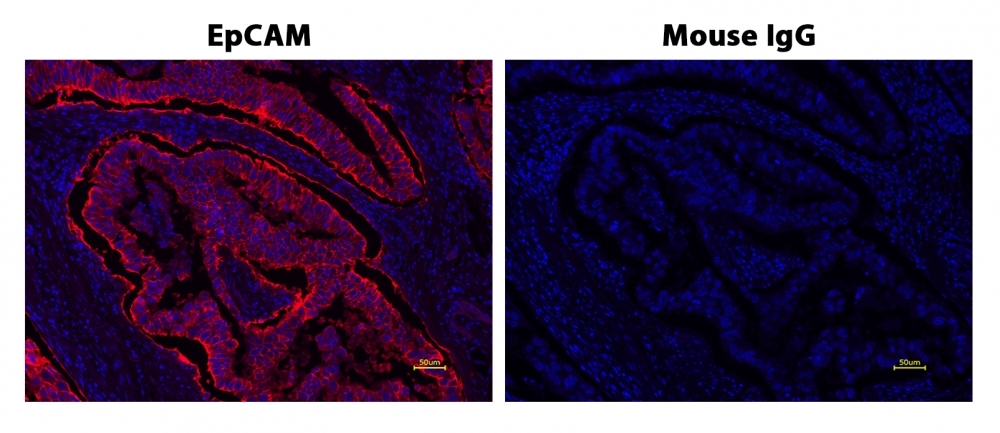iFluor® 660 Styramide
Power Styramide™ Signal Amplification (PSA™) system is one of the most sensitive methods that can detect extremely low-abundance targets in cells and tissues with improved fluorescence signal 10-50 times higher than the widely used tyramide (TSA) reagents. iFluor® dye-labeled Styramide™ conjugates can generate fluorescence signal with significantly higher precision and sensitivity (more than 100 times) than standard ICC/IF/IHC. PSA utilizes the catalytic activity of horseradish peroxidase (HRP) for covalent deposition of fluorophores in situ. PSA radicals have much higher reactivity than tyramide radicals, making the PSA system much faster, more robust and sensitive than the traditional TSA reagents. iFluor® 660 Styramide is a new unique far red fluorescent PSA reagent for multicolor application with our existing PSA and TSA reagents. Its maximum fluorescence falls between Cy5/Alexa Fluor® 647 and Cy5.5/ Alexa Fluor® 647. AAT Bioquest offers the largest collection of TSA regents. We are the exclusive source of the superior PSA reagents for multicolor applications.


| Catalog | Size | Price | Quantity |
|---|---|---|---|
| 44906 | 100 Slides | Price |
Physical properties
| Molecular weight | 1462.94 |
| Solvent | DMSO |
Spectral properties
| Correction factor (260 nm) | 0.07 |
| Correction factor (280 nm) | 0.08 |
| Extinction coefficient (cm -1 M -1) | 250000 1 |
| Excitation (nm) | 663 |
| Emission (nm) | 678 |
| Quantum yield | 0.26 1 |
Storage, safety and handling
| H-phrase | H303, H313, H333 |
| Hazard symbol | XN |
| Intended use | Research Use Only (RUO) |
| R-phrase | R20, R21, R22 |
| Storage | Freeze (< -15 °C); Minimize light exposure |
| UNSPSC | 12171501 |
Instrument settings
| Fluorescence microscope | |
| Excitation | Cy5 filter set |
| Emission | Cy5 filter set |
| Recommended plate | Black wall/clear bottom |
Documents
Contact us
| Telephone | |
| Fax | |
| sales@aatbio.com | |
| International | See distributors |
| Bulk request | Inquire |
| Custom size | Inquire |
| Technical Support | Contact us |
| Request quotation | Request |
| Purchase order | Send to sales@aatbio.com |
| Shipping | Standard overnight for United States, inquire for international |
Page updated on November 20, 2025

